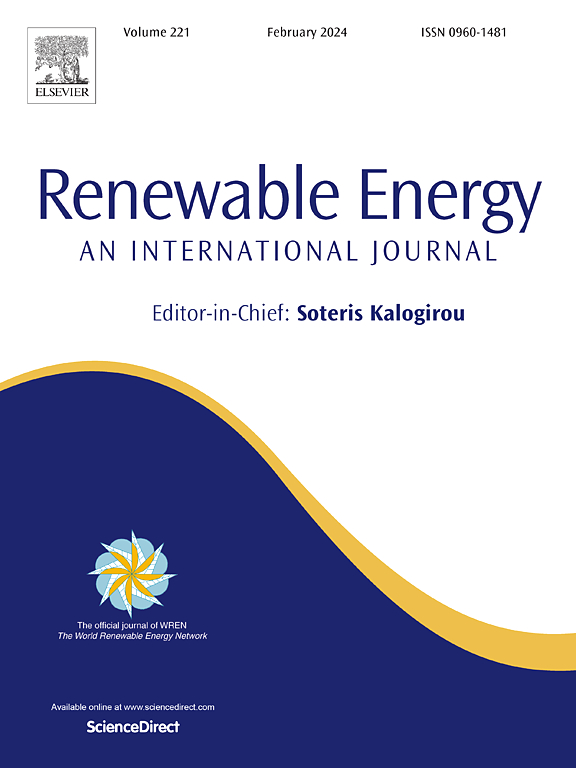Stall-induced aeroelastic instability of floating offshore wind turbines: Comparison of frequency domain and time domain quasi-steady approaches
IF 9
1区 工程技术
Q1 ENERGY & FUELS
引用次数: 0
Abstract
With the increasing size of floating offshore wind turbines (FOWTs), stall-induced aeroelastic instability has become a critical issue. This study numerically investigates this instability for FOWTs at stand-still conditions using time and frequency domain approaches. A nonlinear aeroelastic model based on quasi-steady theory and a linearized version are used for time and frequency domain simulations, respectively. Hydrodynamic damping considers both radiation and viscous drag effects. The aeroelastic instability of a stand-still NREL OC3-Hywind 5MW FOWT is analyzed for various inflow yaw misalignment angles. Frequency domain simulation shows rotor edgewise and tower side-side modes exhibit stall-induced instability due to aerodynamic negative damping at specific yaw misalignment and azimuth angles. The platform’s yaw mode also shows small negative damping, despite large hydrodynamic damping, while other platform modes remain dynamically stable. Safety margins of FOWTs are analyzed for multi-mode stability, and an active control strategy is proposed to prevent stall-induced instability in all unstable modes. Limit cycle oscillations in the rotor’s in-out plane are observed from time domain simulation. Instability regions predicted by both analyses highly overlap, but frequency domain results are more conservative. Blade instability may cause high-frequency vibrations in platform movements with limited amplitudes and severe oscillations in tower structures.
海上浮式风力发电机失速致气动弹性失稳:频域和时域准稳态方法的比较
随着浮式海上风力发电机组规模的不断扩大,失速气动弹性失稳问题已成为一个重要问题。本文采用时域和频域方法对静止状态下的不稳定性进行了数值研究。在时域和频域分别采用基于准稳态理论的非线性气动弹性模型和线性化气动弹性模型进行了仿真。水动力阻尼考虑了辐射和粘滞阻力效应。分析了NREL OC3-Hywind 5MW静置fot在不同入流偏航失调角度下的气动弹性失稳特性。频域仿真结果表明,在特定偏航偏差和方位角下,由于气动负阻尼的影响,旋翼侧向和塔架侧向模式表现出失速诱导的失稳。平台的偏航模式也显示出很小的负阻尼,尽管有很大的水动力阻尼,而其他平台模式保持动态稳定。分析了多模态稳定性的安全裕度,提出了一种防止各模态失速失稳的主动控制策略。通过时域仿真,观察了转子内外平面的极限环振荡。两种分析预测的不稳定区域高度重合,但频域结果更为保守。叶片不稳定可能导致平台运动中有限振幅的高频振动和塔架结构的剧烈振荡。
本文章由计算机程序翻译,如有差异,请以英文原文为准。
求助全文
约1分钟内获得全文
求助全文
来源期刊

Renewable Energy
工程技术-能源与燃料
CiteScore
18.40
自引率
9.20%
发文量
1955
审稿时长
6.6 months
期刊介绍:
Renewable Energy journal is dedicated to advancing knowledge and disseminating insights on various topics and technologies within renewable energy systems and components. Our mission is to support researchers, engineers, economists, manufacturers, NGOs, associations, and societies in staying updated on new developments in their respective fields and applying alternative energy solutions to current practices.
As an international, multidisciplinary journal in renewable energy engineering and research, we strive to be a premier peer-reviewed platform and a trusted source of original research and reviews in the field of renewable energy. Join us in our endeavor to drive innovation and progress in sustainable energy solutions.
 求助内容:
求助内容: 应助结果提醒方式:
应助结果提醒方式:


